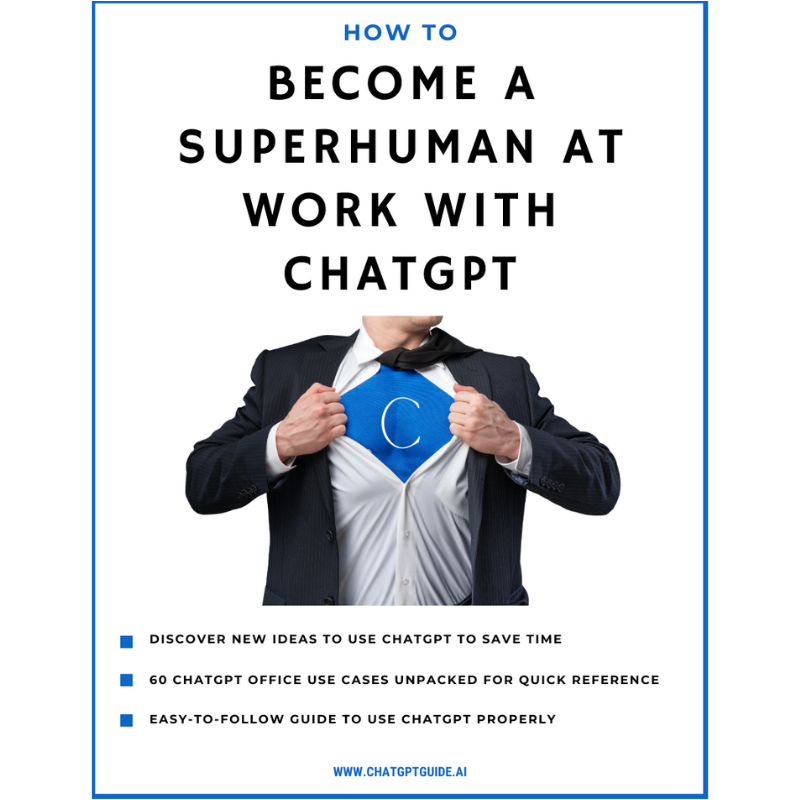Your cart is currently empty!
Overcoming Work-Induced Depression: Tips and Strategies
Author:
Published:
Updated:

In our fast-paced, interconnected world, work-induced depression is a pervasive and often undiscussed issue. It’s the silent invader, creeping into our lives, subtly eroding our productivity, and causing a slow but steady decline in our overall well-being. For those of us who are dissatisfied with our current job and yearn for financial freedom, this is a reality we grapple with every day.
Picture this: it’s Monday morning and you are sitting in your home office, your heart pounding with dread at the prospect of another grueling week. Your inbox is overflowing with emails demanding immediate attention, and the stack of tasks on your desk seems insurmountable. The stress and the pressure are unrelenting, leading you into a state of emotional exhaustion and disheartenment, a state that is all too familiar: work-induced depression. You yearn for the time when work was a source of fulfillment, not a cause for despair.
I recall a point in my own life when I was caught in a similar trap. During the early days of my career, I found myself entrenched in a job that was steadily siphoning away my joy and energy. Days blurred into nights, and weekends were just an extension of the work week. The promise of financial security was constantly at odds with my mental health. It was a tightrope walk, and I was losing my balance.
Reflecting back, I remember one particularly grueling day. It was late, my eyes were stinging from staring at the computer screen, and I felt a sense of desolation creeping in. That was the moment when I realized that the cost of my mental health was too high a price to pay for financial security. I needed a change.
This is a scenario that many of us find ourselves in. We’re stuck in a job that no longer satisfies us, yet we feel powerless to break free. Our emotional state fluctuates depending on our workload, with lighter loads bringing a brief respite of contentment, only to be replaced by a sense of dread and depression as the workload increases.
However, there is a way out. We live in a world where technology and AI are continually advancing, offering us tools and opportunities to work more efficiently, to achieve quick results, and to attain the financial freedom we yearn for. By leveraging these technologies, we can escape the grind, invest in our well-being, and create a comfortable lifestyle that provides us with the luxury experiences we desire.
In this blog post, I want to share with you strategies that can help you leverage technology to achieve financial freedom, improve your quality of life, and most importantly, tackle work-induced depression. I’ll share personal anecdotes, case studies, and actionable insights that will guide, motivate, and inspire you to take the necessary steps toward your goals.
Remember, the journey to financial freedom and improved well-being is not a sprint, it’s a marathon. And with the right guidance and tools, you can not only run this race, but you can win it.
Understanding Work-Induced Depression: Recognizing the Signs and Triggers
Work-induced depression, a silent epidemic in our modern society, is often overlooked or misunderstood. It’s a phenomenon that starts as a whisper and gradually crescendos into a roar that drowns out the joy, motivation, and fulfillment from our lives. This condition, unlike short-term stress or occasional work-related anxiety, has profound and lasting impacts on our mental, emotional, and physical health. It can leave us feeling constantly drained, dissatisfied, and disheartened, holding us back from achieving our goals and desires.
So, what does work-induced depression look like? What are the signs and symptoms we need to watch out for? And most importantly, what triggers it in our workplace?
The signs of work-induced depression can be both subtle and overwhelming. They may start as feelings of exhaustion, difficulty concentrating, and a decline in productivity. Gradually, these feelings can escalate to more serious symptoms such as a constant sense of dread or anxiety about work, feelings of worthlessness, persistent sadness, and even physical symptoms such as headaches or sleep disturbances.
Meet John
A friend (let’s call him John, because that’s anonymous, right?), a fellow tech enthusiast. He was working as a software engineer in a top tech firm. He loved his job initially, but as time passed, his workload kept increasing. He started to feel overwhelmed. There were constant deadlines, late-night calls, and high expectations. Gradually, he started to exhibit the classic signs of work-induced depression: he became increasingly irritable, lost interest in activities he once enjoyed, and struggled with decision-making. His work, which was once a source of pride and excitement, had become a trigger for his depression.
Workplace triggers for depression can vary greatly, but some of the most common ones include excessive workload, lack of control over job duties, unrealistic job expectations, and a toxic work environment. In John’s case, the overwhelming workload, coupled with the pressure of constant deadlines, were his primary triggers.
Recognizing these signs and triggers is the first step toward overcoming work-induced depression. It provides a basis for understanding what’s happening and why, and it forms the foundation for the strategies and tips that can help us tackle this issue head-on. I’ll come back to John in a bit, but let’s look at some common signs and triggers.
Signs of Work-Induced Depression
| Sign | Description |
|---|---|
| Persistent Sadness or Low Mood | Prolonged periods of sadness or consistently low mood that doesn’t seem to lift |
| Loss of Interest or Pleasure | Lack of interest in previously enjoyed activities, including work projects, hobbies, or social activities |
| Feelings of Worthlessness or Excessive Guilt | Constantly feeling inadequate or blaming oneself for things beyond control |
| Fatigue or Loss of Energy | Constant tiredness, both physically and emotionally, despite getting enough sleep |
| Difficulty Concentrating or Making Decisions | Difficulty focusing on tasks or making even simple decisions |
| Changes in Sleep Patterns | Insomnia (difficulty falling asleep or staying asleep) or hypersomnia (excessive sleeping) |
| Changes in Appetite or Weight | Significant decrease or increase in appetite, leading to weight loss or gain |
| Physical Symptoms | Headaches, stomachaches, or backaches without a clear physical cause or response to regular treatment |
| Thoughts of Death or Suicide | Severe cases may lead to thoughts of death or suicide; immediate help should be sought if experiencing these thoughts |
Triggers of Work-Induced Depression
| Factor | Description |
|---|---|
| Excessive Workload | Constantly overwhelmed by a high volume of tasks, leaving no time to relax or unwind |
| Lack of Control | Feeling powerless with no influence over work duties or decisions, leading to frustration and hopelessness |
| Unrealistic Expectations | Pressure to achieve perfection or meet unattainable goals, creating constant stress and anxiety |
| Poor Work-Life Balance | Work encroaching on personal time, hindering family or leisure activities, leading to resentment and increased stress |
| Job Insecurity | Persistent fear of job loss or lack of stability, causing anxiety and impacting overall mental well-being |
| Workplace Bullying or Harassment | Toxic work environment involving bullying or harassment, negatively affecting mental health and self-esteem |
| Lack of Recognition or Reward | Efforts and hard work going unnoticed or unrewarded, leading to feelings of being undervalued or unappreciated |
| Monotonous or Unstimulating Work | Tedious or unchallenging tasks that fail to engage or provide a sense of fulfillment, resulting in boredom and potential depression |
But remember, while work-induced depression can feel like a dark cloud hanging over your life, it’s important to remember that there is a way out. There are effective strategies and tools, especially in our tech-driven world, that can help us navigate through these challenges.
By leveraging technology and AI, we can streamline our tasks, manage our workload, and even find new opportunities for financial growth and freedom.
Overcoming Work-Induced Depression: Empowering Strategies and Techniques

Work-induced depression can feel like an enormous mountain that’s impossible to scale. However, remember that mountains are climbed not in giant leaps, but one step at a time. The journey to overcome this challenge is similar. It involves making small, consistent changes to your lifestyle, managing stress effectively, and seeking professional help when necessary.
Let’s revisit John, our software engineer. After recognizing the signs of work-induced depression, John decided to take action and sought professional help. He was advised to do seemingly innocuous changes to his lifestyle. He began to exercise regularly and ate a healthier diet. He also started practicing mindfulness and took up painting as a hobby. Over time, John saw a significant improvement in his mental health and overall feeling towards life.
He still had a major issue, but I will visit that after we explore these seemingly innocuous strategies in detail.
Lifestyle Changes
The first step towards overcoming work-induced depression involves making deliberate lifestyle changes. These changes are the small steps that, when combined, can help you climb that mountain.
1. Establish a Healthy Routine: This includes maintaining a regular sleep schedule, eating a balanced diet, and incorporating physical activity into your day. Studies repeatedly show that those who engaged in physical activity had lower rates of depression and anxiety than those who did not.
2. Time Management: As someone who values time over money, it’s important to manage your time effectively. Prioritize your tasks and break them down into manageable chunks. This can help reduce feelings of overwhelm and increase your efficiency.
3. Leverage Technology for Efficiency: As a tech enthusiast, you can leverage AI and automation tools to streamline your tasks and reduce your workload. This can provide you with quick results and free up more time for relaxation and family.
Amazon shared 67 ways its staff could leverage ChatGPT for increased productivity
Stress Management Techniques
Stress is a major trigger for depression. Effective stress management techniques can help mitigate the impact of stress and improve your mental health.
1. Mindfulness and Meditation: Regular practice of mindfulness and meditation can help reduce stress and increase your sense of well-being. There are several apps and online resources available that can guide you through this process.
2. Deep Breathing and Relaxation Techniques: These can help calm your mind and body, reducing the physical symptoms of stress.
3. Pursue a Hobby: Engaging in activities you enjoy can provide a much-needed break from work stress. Whether it’s painting, gardening, reading, or coding a new AI model, a hobby can provide a sense of fulfillment and joy.
Professional Help
Despite our best efforts, there are times when professional help is necessary. Seeking help is not a sign of weakness, but rather a step towards empowerment.
1. Therapy and Counseling: A mental health professional can provide you with techniques and strategies to cope with depression. Cognitive-behavioral therapy (CBT), for instance, can help you change negative thought patterns and behaviors.
2. Medication: In some cases, medication may be recommended by a health professional. Antidepressants can help manage the symptoms of depression and improve quality of life.
John’s transformation
John still felt like he spiraled towards depression when facing the overwhelming mountain of tasks at work. When he confided in me, I turned him in the direction of AI tools that could support him with his more repetitive tasks.
In his exploration, he also found a bunch of tech to help him with Mental Health – which I discuss in the next section.
You may also like 📖
Harnessing Technology and AI for Mental Health: Innovative Tools and Platforms
We live in a world where technology is deeply ingrained in our daily lives, shaping the way we work, play, and even manage our mental health. Today, we have access to a range of innovative tech tools and digital platforms designed to assist with mental health management. They offer convenient, accessible, and effective solutions to support our journey towards overcoming work-induced depression and achieving overall well-being.
Mental Health Apps
1. Headspace: This app offers guided meditations, mindfulness exercises, and sleep soundtracks to help reduce stress and improve mental health. Its simplicity and user-friendly interface make it a go-to for many people seeking to incorporate mindfulness into their daily routines.
2. Moodpath: Designed as a digital mental health companion, Moodpath asks daily questions to track your mood and emotions. It uses this data to generate insights into your mental health and provide personalized recommendations.
3. Calm: Known for its wide variety of guided meditations, Calm also offers sleep stories, breathing programs, stretching exercises, and relaxing music. It’s an all-in-one tool for stress management and relaxation.
AI-Driven Tools
1. Woebot: An AI-powered chatbot, Woebot uses principles of cognitive-behavioral therapy (CBT) to help users manage their mental health. It offers daily check-ins, mood tracking, and evidence-based mental health content.
2. Wysa: This is another AI-driven mental health app. Wysa uses cognitive behavioral therapy, dialectical behavior therapy, and mindfulness to help users manage their mental health. It provides an anonymous, non-judgmental space to express your feelings and learn new coping strategies.
How to use ChatGPT to 10x your Instagram account in 7 steps

We teach you how to build your own super-useful prompts
View our Ebook, with a step-by-step
walkthrough to conquer Instagram using ChatGPT even if you are not tech-savvy
Online Therapy Platforms
1. Talkspace: Talkspace connects you with licensed therapists through a secure and private online platform. You can send your therapist text, voice, or video messages at any time, making therapy more accessible and convenient.
2. BetterHelp: Similar to Talkspace, BetterHelp offers online counseling services with licensed professionals. It allows for scheduled live sessions in addition to messaging, providing a more flexible therapy experience.
These tools are transforming the way we approach mental health, making support and resources more accessible than ever before.
As we journey towards overcoming work-induced depression and achieving financial freedom, these digital tools can be our allies.
ChatGPT and mental health
ChatGPT was not available to John during his struggle. But, it certainly is to you now.
One of the key advantages of conversational AI is its accessibility. It’s available around the clock, providing instant support when you need it the most. Imagine feeling stressed or lonely in the middle of the night, with no one to talk to. In such moments, ChatGPT can serve as a comforting presence, offering an open, non-judgmental space to express your thoughts and feelings.
Moreover, conversational AI can help alleviate feelings of loneliness by providing consistent interaction. For those who live alone, or find it challenging to connect with others, having a ‘conversation’ with AI can provide a sense of companionship.
Another major benefit is anonymity. Often, the stigma associated with mental health can prevent people from seeking help. With AI like ChatGPT, users can express their feelings without fear of judgment or shame. This can be incredibly liberating, helping users to open up about their struggles and seek the support they need.
While I’m not advocating conversational AI as a substitute for professional mental health services (yikes, even ChatGPT will give you that disclaimer with every message), but it can serve as a valuable tool in our mental health toolkit. As we continue to navigate the complexities of our modern world, innovations like ChatGPT can offer much-needed support, helping us feel a little less alone in our journey.
You may also like 📖
- How ChatGPT can help you find your next perfect getaway
- How to use ChatGPT as a Teacher in the Early Years Classroom
- How to use ChatGPT to create a yoga plan that aids weight loss
- Using ChatGPT to spark conversations for dates and couples
- How to use ChatGPT to write the best wedding speech ever
- How to use ChatGPT to create Fitness Plans that get results quick
- How to use ChatGPT to create a Budget that actually works
Conclusion: Taking Charge of Your Mental Health in the Workplace

As we journey through the complex landscape of our professional lives, it’s crucial to remember that our mental health is just as important as our professional achievements. Work-induced depression is not a sign of weakness or a lack of resilience. Instead, it’s a reflection of the immense pressures and demands we face in our modern work environment. Acknowledging its presence is the first step towards healing and recovery.
Throughout this blog post, I’ve explored the signs and triggers of work-induced depression, discussed various coping strategies, and looked at how technology and AI can be leveraged to support mental health. But the most important takeaway is this: it’s okay to ask for help. It’s okay to acknowledge that you’re struggling. And it’s okay to prioritize your mental well-being.
If you’re feeling overwhelmed at work, remember John’s story. Remember how he identified the signs of work-induced depression, how he made changes to his lifestyle, and sought help when needed. You are not alone in your journey, and with the right tools and strategies, it’s possible to overcome work-induced depression.
Today, I encourage you to take proactive steps for your mental health. Whether it’s incorporating a mindfulness practice into your daily routine, seeking support from a mental health professional, or using a mental health app like Headspace or Woebot, or even having a chat with ChatGPT – each step you take is a step towards better mental health and well-being.
As we forge ahead in our quest for financial freedom and a comfortable lifestyle, let’s not forget to invest in our mental health. After all, our greatest asset is not our professional skills or our bank accounts, but our well-being.
Remember, it’s not just about surviving the grind, it’s about thriving despite it. So, let’s embrace this journey with courage, resilience, and hope. Let’s redefine what success looks like in our professional lives. And most importantly, let’s take care of our mental health, because you matter.



